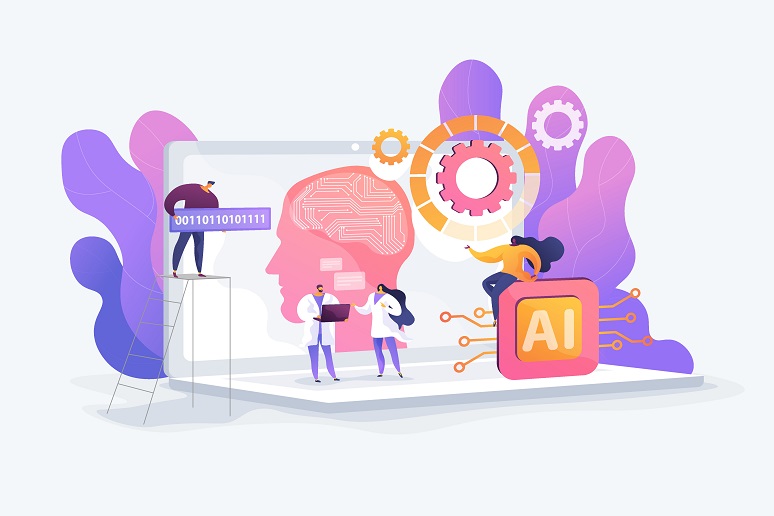Network vendor Arista last week announced the next phase of its Cognitive Networking architecture. Arista’s vision for Cognitive Networking is to apply AI to the massive amount of telemetry data they receive and present it in its CloudVision dashboard, to help enterprises prioritize network resources to ensure high reliability and consistent performance. Cognitive Networking will also include automation capabilities to offload many of the day-to-day IT tasks.
Arista has applied the Cognitive Networking to the campus edge — as wired and wireless network can be managed together — and has extended the concept of the edge to include IoT endpoints and working from home (WFH). The definition of the edge has certainly changed over the past year, as prior to the pandemic, most network pros would define the edge as the wired/wireless edge, but COVID-19 blew that definition up.
The WFH pivot has been obvious, but I’m expecting to see IoT explode in a big way as people start returning to the office. Businesses want to create a safe work environment, and IoT is the technology that can do that. Expect to see automated temperature scanners, cleaning robots, environmental sensors, proximity devices, IP cameras, and more become mainstream, as businesses look to automate the enforcement of social distancing and work safety.
Arista has defined the coming together of the campus edge with IoT and WFH as the “unified” edge, with unified in this case meaning a unified set of data that acts as a single source of truth. Arista’s “secret sauce” is the real-time telemetry information generated by its network infrastructure. This is something customers need to look at carefully. While most network vendors articulate the same type of vision — that is AI used to make better decisions, some use SNMP or other polled data. Polled data isn’t real-time; it samples at periodic intervals and can often miss things. Those types of systems can’t provide the same level of granular data as real-time telemetry. Arista built its operating system, EOS, to have an embedded state machine that acts as a centralized database to provide the broadest set of data.
As part of the announcement, Arista has added a number of new “Cognitive Unified Edge” capabilities to its CloudVision portal. These include:
- Anomaly Detection includes predictive alerting for events, such as application reachability, resource utilization, and device state monitoring. This has both performance and security implications. When things deviate from the norm too far, it indicates somethings changed.
- Compliance Dashboard that provides a proactive risk assessment of the wired and WiFi networks by automatically identifying known security vulnerabilities and software defects and their potential impact across the network estate. This can help businesses plan upgrades and replacement cycles in a way that’s non-disruptive to the business.
- Arista P-Tracer tracks a user’s location over a given period, providing critical information necessary for today’s COVID-19 era of contact tracing. It’s not a full-blown contract tracing system, but the data can be fed into one, or it can be “contact tracing light.” In addition, Arista is partnering with location-based services vendors to deliver:
- Tracking of smart devices, including phones, watches, laptops, and tablets
- Healthcare asset tracking system integrations for analysis and reporting of the proximity of patients, staff, visitors, and location of critical healthcare assets
Also, Arista announced a feature called IoTvision. As the name suggests, CloudVision provides IoT specific data, even if IT isn’t aware of the device. Based on traffic patterns, IoTvision can automatically identify thousands of IoT endpoints, which is important since IoT devices are often deployed by groups other than IT. IoTvision collects endpoint information and displays it in a single view, providing the operator with a consolidated view of endpoint inventory, device type, connection status, traffic patterns, and quality of experience across endpoints connected to both the wired and wireless network.
Arista also announced several WiFi6 access points along with a remote access point. It’s this latter one I find interesting, as it makes WFH easy. Typically, WFH is enabled through VPN clients, Citrix desktops, or other complex technologies. What if there was an easier way? Arista’s remote access point is a remote AP that a user plugs into their home router, and it automatically creates a connection back to the company. The user’s home becomes part of the company network. The solution includes split-tunneling capabilities, so the kids at home doing Zoom calls can go directly to the Internet, while the employee can connect back to the corporate network. This is the easiest way to get workers set up at home, as there’s nothing to do except plug the AP in.
The world has changed a lot in the last year, and the network must also change to handle the new normal. Manual processes need to give way to automation, AI-/SNMP-based polling needs to shift to real-time telemetry, and the network needs to evolve from campus to campus plus cloud plus IoT plus WFH, and IT needs to operate proactively instead of reactively. Arista was born in the cloud and now has brought many of these principals down to the enterprise networks.










